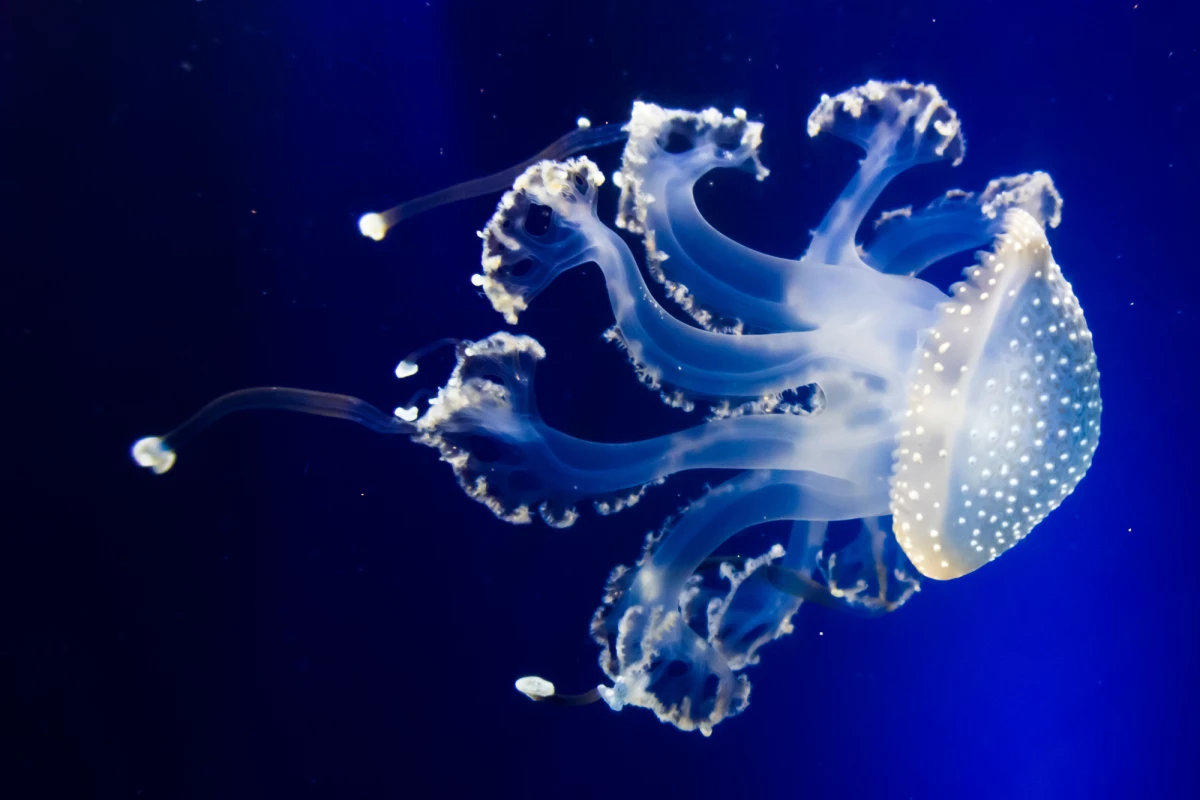Due to their unique way of moving through the water, jellyfish are frequently used as inspiration for soft, water-based robots. Now, researchers have discovered that the flapping propulsion system of a robotic jellyfish is not only good for movement, but it can also draw small bits of debris up from the ocean floor without any contact. Such a robot could be useful for removing trash from delicate ocean environments, like coral reefs.
The new robots, invented by scientists at the Max Planck Institute For Intelligent Systems (MPI-IS), are about the size of a hand and consist of a series of six actuators filled with artificial muscles known as HASELs. These muscles are basically oil-filled sacs covered by electrodes. When the electrodes receive a current, they become filled with a positive charge. They then discharge the current to the surrounding, negatively charged ocean water. This cycle drives the oil in the bags to get pushed back and forth, causing the actuators to execute their flapping movement.
Most significantly, the flapping movement creates a current in the water that can draw particles upward, more or less mimicking the way a plunger draws clogs from a drain.
"When a jellyfish swims upwards, it can trap objects along its path as it creates currents around its body," said first author Tianlu Wang, a postdoc in the Physical Intelligence Department at MPI-IS and first author of the publication. "In this way, it can also collect nutrients. Our robot, too, circulates the water around it. This function is useful in collecting objects such as waste particles. It can then transport the litter to the surface, where it can later be recycled."

The robots are nearly silent which, combined with their touch-free approach makes them an environmentally sensitive tool that could be applied in various situations.
"It is also able to collect fragile biological samples such as fish eggs," said Wang of the Jellyfish-Bot. "Meanwhile, there is no negative impact on the surrounding environment. The interaction with aquatic species is gentle and nearly noise-free."
While the Jellyfish-Bot can do its ocean housekeeping without actually grabbing anything, the researchers were, in fact, able to demonstrate that the robot could execute grasping motions when two of the actuators were brought towards each other in a pincer gesture. They also showed that two robots could work together to lift a more complicated item like a face mask from the ocean floor, as you can see in the following video.
While the Jellyfish-Bot's performance is impressive, it does have one serious limitation at this point: it needs to be attached to a wire in order to receive power. The research team, however, is working on eliminating this need and it's already loaded up a sample robot with a battery and wireless com unit and set it loose in the pond of the Max Planck Stuttgart campus. While the robot could locomote in a forward direction, the team couldn't get it to change its course, but it's working on building in that functionality next.
The research has been published in the journal Science Advances.







